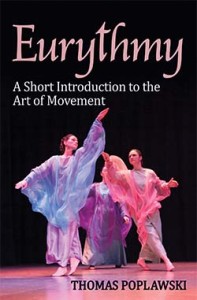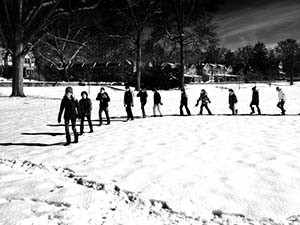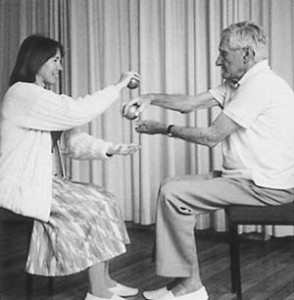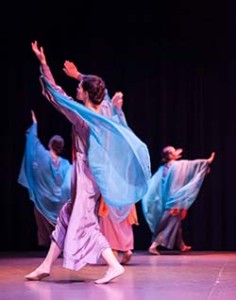What is Eurythmy?
by Floris Books • 14 April 2015 • Steiner-Waldorf Education • 0 Comments
 Floris Books have published several books on Eurythmy, but if you’re not as familiar with the term as we are you might be asking yourself the question: ‘what is eurythmy?’
Floris Books have published several books on Eurythmy, but if you’re not as familiar with the term as we are you might be asking yourself the question: ‘what is eurythmy?’
Eurythmy is a form of art movement initiated by Rudolph Steiner. It’s almost like a dance, and the aim is to make speech and music visible. Bodily movements and specific movements correspond to particular notes or sounds. Steiner did not like to consider eurythmy as a form of dance, but rather as an entirely new art form.
There are three main strands of eurythmy – performance eurythmy, educational eurythmy and therapeutic eurythmy.
Eurythmy in Education

Sixth Grade students at The Waldorf School of Philadelphia make forms in the snow as part of an applied Eurythmy lesson.
In many Waldorf schools eurythmy is a compulsory subject intended to stimulate children physically and emotionally, helping towards their overall growth and well-being. As Poplawski puts it, “eurythmy seeks to be a soul gymnastics in contrast to the physiological gymnastics of physical education.”
As well as improving coordination and sense of rhythm, the emphasis on group movement can help to stimulate a child’s social and emotional development.
“Doing eurythmy allows children to experience with their entire body the building blocks of language and music” – Thomas Poplawski
Eurythmy Therapy
Eurythmy therapy developed much later, coinciding with the renewal of interest in ‘body therapies’ such as massage and yoga. In 1921, Steiner worked closely with a group of physicians and eurythmists to develop the potential of eurythmy to address the root cause of illnesses. This partnership continued until Steiner’s death in 1925. Eurythmy therapy works on the principle that healing involves the restoration of imbalances within the individual. Eurythmy excercises therefore work by stimulating the body’s ability to heal itself.
Performance Eurythmy
Eurythmy on stage is very different to many of the modern dance techniques it is often compared to. The emphasis is on flowing movement – performers are rarely stationary. Props are rarely used, with lighting and costume used to direct attention away from the physical form of the performers, instead directing attention to to the flow of the group’s sculpting of space.
For more information about eurythmy, Thomas Poplawski’s book Eurythmy: A Short Introduction to the Art of Movement provides a useful overview. For more in depth discussions of the topic, head to our website for a list of books dealing with various aspects of eurythmy.

